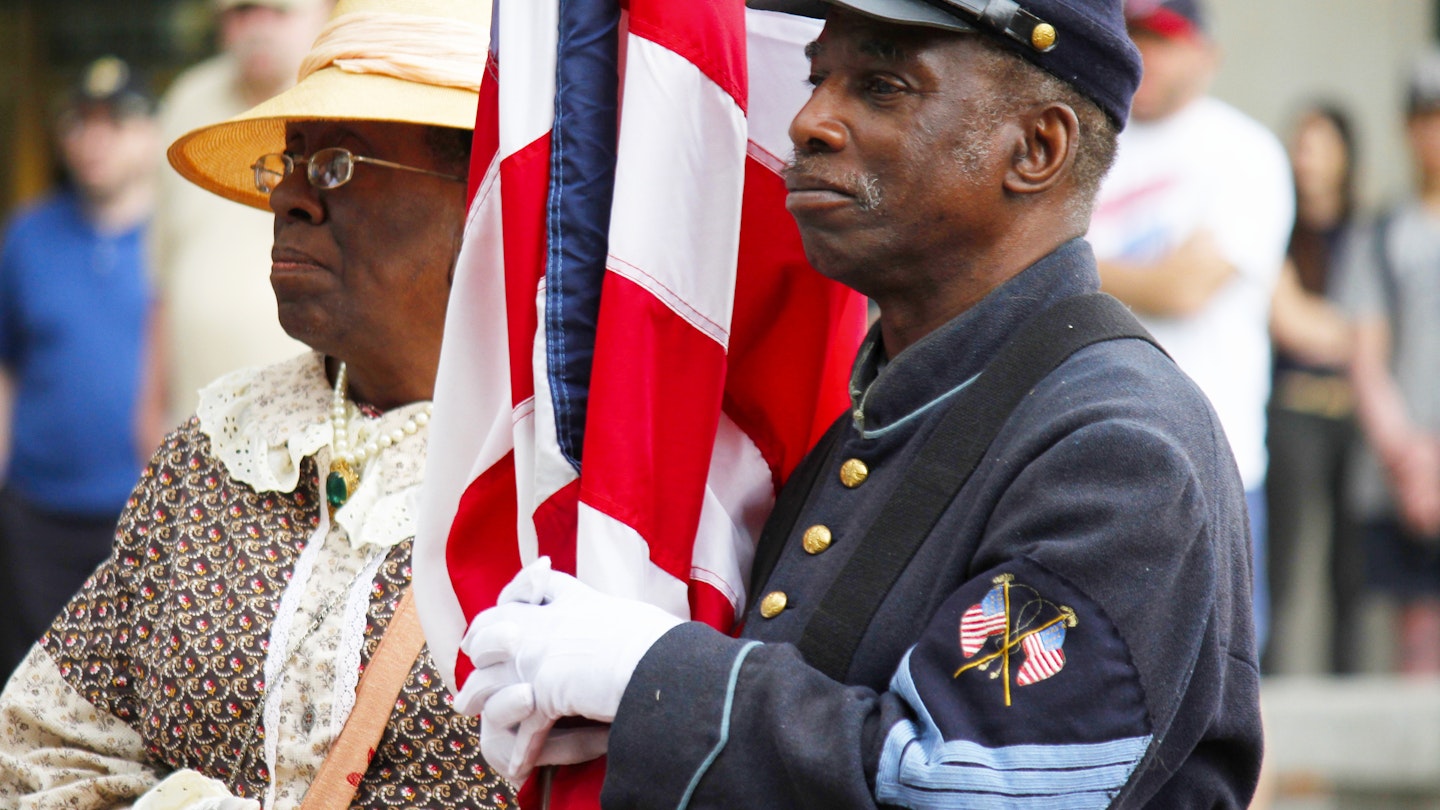A Journey Through African American History in Philadelphia
The story often told about the city of Philadelphia frequently begins with the founding fathers. However, there exists a narrative of equal importance that revolves around the legacy of African Americans and their invaluable contributions to the city’s cultural fabric. As a former center of free black life in the U.S., Philadelphia boasts a wealth of Black history that remains accessible for exploration.
From the enlightening exhibits at The National Constitution Center to the establishment of the African Methodist Episcopal (AME) Church, there is more African American history to uncover in this vibrant city than one may initially perceive.
National Constitution Center
The National Constitution Center functions as a civic education headquarters and America’s town hall. It is certainly worthwhile to direct your visit toward the engaging exhibits highlighting Black Americans and their significant contributions to our nation. Key highlights include:
- A signed copy of the “A More Perfect Union” speech delivered by Barack Obama, the first Black president.
- Insights into landmark Supreme Court cases such as Brown v. Board of Education and Dred Scott v. Sandford.
- A rare copy of the Emancipation Proclamation.
Through the month of February, which marks Black History Month, the museum often hosts new exhibitions to commemorate this important time.
The African American Museum in Philadelphia
Situated just blocks from the Liberty Bell, Philadelphia’s African American Museum was established in 1976 as part of the city’s bicentennial festivities. As the first museum in the nation dedicated to African American culture and history constructed by a municipal entity, it features:
- Four gallery spaces, three of which are permanently focused on the African American experience: the African Diaspora, the narrative of African Americans in Philadelphia, and the Contemporary Narrative.
- An auditorium space that, along with the fourth gallery, facilitates various artistic and educational offerings.
Johnson House Historic Site
Located in the Germantown neighborhood of Philadelphia, the Johnson House Historic Site symbolizes the legacy of slavery and the Underground Railroad. Built in 1768 by Dutch immigrant John Johnson as a wedding present for his son, this house became a crucial station along the Underground Railroad in the 1800s due to the Johnson family’s Quaker faith and commitment to community service.
Today, the Johnson House is a cornerstone of historic preservation and educational programs in Philadelphia, with guided tours available to the public on Thursday-Saturday and by appointment on other weekdays. Tours offer insights into the Johnson family’s role in the abolitionist movement and the individuals who sought refuge in their home as they journeyed towards freedom. This site also hosts lectures and events centered on African American history, including an annual Juneteenth celebration.
Mother Bethel African Methodist Episcopal (AME) Church
Known as “Mother Bethel,” this church is often regarded as the birthplace of the AME denomination, founded in 1793 as a response to discrimination against free Black individuals in mainstream Methodist congregations. Mother Bethel church, established a year later, played a pivotal role in the freed Black community in Philadelphia. Now located in a stunning red brick building, the third to occupy this site, Mother Bethel continues to serve the Black community, offering museum tours that unveil a vibrant archive and artifacts dating back to the 1600s.
Marian Anderson Historical Residence and Museum
Marian Anderson, the renowned Black opera singer who famously performed at the Lincoln Memorial in 1939, called Philadelphia home. Her three-level Italianate-style residence, built in 1924, is now a museum managed by the Marian Anderson Historical Society. Visitors can explore rooms filled with original photographs, clothing, and memorabilia, with rotating exhibits throughout the year.
The singer transformed her residence into a safe haven for fellow African American musicians and artists during the era of Jim Crow laws, nurturing a community of creativity and support. Her legacy continues through the Marian Anderson Scholar Program, which inspires young artists aged 18 to 45 to hone their craft while connecting with one another.
Historical Society of Philadelphia
For those eager to delve into Philadelphia’s past or seek to explore genealogy, the Historical Society of Pennsylvania welcomes visitors. With a collection exceeding 21 million items, the society focuses on the history of greater Philadelphia, eastern Pennsylvania, and Delaware, encompassing:
- Sheet music, photographs, restaurant menus, newspapers, and countless other materials that reflect social and economic conditions of the past.
Significantly, the Pennsylvania Abolition Society’s digital exhibit, located at the Historical Society, vividly illustrates an essential part of Philadelphia’s past and Black history. This exhibit allows researchers to engage with vital documentation from 1775, revealing the society’s efforts to ensure access to education, employment, and opportunities for Black youth.
The President’s House
Just steps away from the iconic Liberty Bell, the President’s House chronicles the lives of nine enslaved Africans who resided in the home of George Washington and John Adams during Philadelphia’s time as the nation’s capital. The site is uniquely presented as a deconstructed structure, with only the original four walls remaining, symbolizing the stark contrast between slavery and freedom.
Artifacts retrieved from the mansion, paired with informative exhibits detailing the lives of the enslaved Africans, provide a profound experience for visitors. The open-air site is accessible 24 hours a day, serving as a poignant reminder of the history of Black Americans in the context of this nation.
The Colored Girls Museum
One of Philadelphia’s most unique museums, the Colored Girls Museum is nestled in a historic home in Germantown, celebrating the experiences and struggles of African American women and girls. This museum serves as both a sacred space and an art exhibition, utilizing artifacts and artwork to create a tangible tribute to the everyday lives and contributions of Black women.
Safety recommendations and restrictions during a pandemic can change rapidly; therefore, it is advisable to check with local authorities for up-to-date guidance regarding health and safety while traveling.





